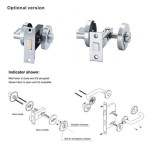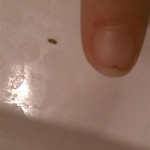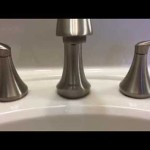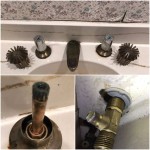Addressing a Leaking Tap in Your Bathroom Sink: A Comprehensive Guide
A leaking tap in a bathroom sink is a common household issue that, if left unaddressed, can lead to a multitude of problems ranging from increased water bills to potential water damage within the home. Understanding the causes of a leaking tap and possessing the knowledge to either repair it or seek professional assistance is crucial for maintaining a functional and cost-effective plumbing system. This article will explore the various reasons why a tap might leak, provide a step-by-step guide to diagnosing the problem, and outline potential solutions, including when professional intervention is necessary.
Ignoring a dripping tap can have significant financial repercussions. Even a small, consistent drip can accumulate to a substantial amount of wasted water over time. This waste translates directly into higher water bills. Moreover, the constant presence of water can promote the growth of mold and mildew, especially in the damp environment of a bathroom. Mold and mildew not only pose health risks but can also cause structural damage to walls, flooring, and fixtures. Therefore, addressing a leaking tap promptly is essential for preventing these costly and potentially harmful consequences.
Understanding the Common Causes of Leaking Taps
Pinpointing the reason for a leaking tap is the first step towards rectifying the issue. Several factors can contribute to this problem, and understanding these causes allows for a more targeted and effective repair strategy. The most frequent reasons include worn-out washers, damaged O-rings, loose or corroded valve seats, and problems with the tap cartridge.
Washers are small, rubber or fiber discs that create a watertight seal when the tap is turned off. Over time, the constant friction and pressure of the tap being opened and closed can cause these washers to wear down, crack, or become misshapen, leading to leaks. Similarly, O-rings, small rubber rings used to seal the stem and other moving parts of the tap, can degrade due to age and exposure to water, resulting in leaks around the tap handle. Valve seats, the stationary part of the tap that the washer presses against to create a seal, can become corroded or accumulate mineral deposits, preventing a proper seal and causing water to drip. Finally, cartridge taps, which use a single lever to control both water flow and temperature, can develop leaks due to damage or wear on the cartridge itself. Each of these components plays a vital role in the tap's functionality, and their degradation can manifest as a persistent leak.
Step-by-Step Diagnosis of a Leaking Tap
Before attempting any repairs, a thorough diagnosis of the leaking tap is necessary. This involves carefully examining the tap and its surrounding components to identify the source of the leak and the potential cause. This process helps in determining the appropriate repair strategy and ensures that the correct parts are replaced.
Begin by shutting off the water supply to the tap. Most bathrooms have shut-off valves located beneath the sink. Turning these valves clockwise will stop the flow of water to the tap, preventing any further leaks during the diagnostic process. Once the water is shut off, turn on the tap to relieve any remaining pressure in the lines. Visually inspect the tap for any obvious signs of damage, such as cracks or corrosion. Pay close attention to the base of the tap, the handle, and the spout. Check for water pooling in these areas, as this can indicate the source of the leak. Next, disassemble the tap, carefully noting the order in which the components are removed. This will make reassembly easier later on. Inspect the washers, O-rings, and valve seats for signs of wear, tear, or corrosion. If the tap is a cartridge type, examine the cartridge for any visible damage or mineral buildup. Cleaning the components with a mild detergent and a soft brush can help reveal any hidden problems. Finally, consider the location of the leak. Is the water dripping from the spout, leaking from around the handle, or pooling at the base of the tap? This information can help narrow down the potential causes and identify the faulty component. A systematic approach to diagnosing the problem will save time and ensure that the correct repairs are made.
Potential Solutions for Repairing a Leaking Tap
Once the cause of the leak has been identified, the next step is to implement the appropriate solution. Depending on the nature of the problem, this may involve replacing worn-out parts, cleaning corroded components, or tightening loose connections. In some cases, a simple repair can resolve the issue, while in other situations, a more extensive overhaul or even tap replacement may be necessary.
If the leak is caused by a worn-out washer, the solution is straightforward: replace the washer. Obtain a new washer of the same size and type from a hardware store or plumbing supply store. Ensure that the new washer is properly seated and secured before reassembling the tap. Similarly, if a damaged O-ring is the culprit, replace it with a new O-ring of the appropriate size. Lubricating the new O-ring with silicone grease can help prolong its lifespan and ensure a proper seal. For corroded valve seats, cleaning them with a wire brush or a specialized valve seat dressing tool can sometimes restore a smooth sealing surface. However, if the corrosion is severe, the valve seat may need to be replaced entirely. Cartridge taps require a different approach. If the cartridge is damaged or worn, it should be replaced with a new cartridge that is compatible with the tap model. Disassembling and replacing a cartridge tap can be more complex than repairing traditional taps, so it is essential to follow the manufacturer's instructions carefully. In some cases, the leak may be caused by a loose connection or a damaged pipe fitting. Tightening the connections with a wrench or replacing the damaged fitting can resolve the problem. Before reassembling the tap, ensure that all components are clean and properly lubricated. This will help prevent future leaks and ensure smooth operation. After reassembling the tap, slowly turn on the water supply and check for any leaks. If the leak persists, re-examine the components and try a different solution.
While many tap repairs can be handled by homeowners with basic plumbing skills, there are situations where professional assistance is necessary. If the problem is complex or requires specialized tools, or if the homeowner is uncomfortable working with plumbing systems, it is best to call a qualified plumber. Attempting to repair a complicated plumbing issue without the proper knowledge and experience can lead to further damage and potentially costly repairs. Furthermore, if the tap is part of a more extensive plumbing system, such as a multi-story building or a complex piping configuration, professional expertise is often required to ensure that the repairs are done correctly and safely. A licensed plumber has the knowledge, experience, and tools to diagnose and repair a wide range of plumbing problems, including leaking taps. They can also provide valuable advice on tap maintenance and prevention of future leaks.
Preventative maintenance is key to avoiding future tap leaks. Regularly inspecting taps for signs of wear and tear, such as drips, leaks, or corrosion, can help identify potential problems early on. Tightening loose connections and replacing worn-out washers or O-rings before they fail can prevent leaks from developing. Avoid over-tightening taps, as this can damage the washers and valve seats. Consider installing water softeners if the water supply is hard, as hard water can contribute to mineral buildup and corrosion in taps. By taking these preventative measures, homeowners can prolong the lifespan of their taps and avoid the inconvenience and expense of dealing with leaks.

How To Fix A Dripping Bathroom Faucet

5 Reasons Your Faucet Is Dripping Water How To Fix It

How To Fix A Bathroom Faucet 14 Steps

How To Fix A Dripping Tap With Bigbathroom

Fix A Leaky Bathroom Faucet Replace Cartridge Quick Easy Home Repair

Properly Fixing A Leaky Sink Faucet Wallside Windows

How To Fix A Bathroom Faucet 14 Steps

How To Fix A Leaky Bathroom Sink Faucet

How To Fix A Faucet

How To Fix Pipework A Tap Faucet Leaking Under The Sink







